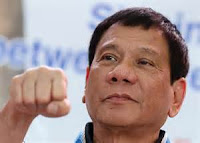Annotated Bibliography:
Jay, Timoty and Janschewitz, Kristin. “The pragmatics of swearing.” Journal of Politeness Research. Language, Behaviour, Culture. Volume 4, Issue 2, Pages 267–288. 2008 August. Accessed 2016 September 28. DOI: 10.1515/JPLR.2008.013
Also see:
Jay,
Timothy1, and Kristin Janschewitz. "Filling The Emotion Gap In Linguistic
Theory: Commentary On Potts' Expressive Dimension." Theoretical
Linguistics 33.2 (2007): 215-221. Humanities Source. Web. 29 Sept.
2016.
Introduction
The Skerrett and Bomer article spoke
of how students self-emerge in “unofficial worlds” and that out-of-school
literacies cross personal “borderzones” spanning each of our life experiences
regardless of “age, gender, [or] status” (Skerret 1257). They quote Renato
Rosaldo about “disparate worlds […over] a range of relationships, from intimacy
to collegiality and friendship to enmity” (Sekerrett 1257). That reminded me of
reading I came across over the summer about the dissonance of communications,
the wedge of intentional sarcasm, and a loss of civility across the media. P.M. Forni, a professor of Italian and literature at John
Hopkins, set aside a complete chapter to civility in our culture include (qtd
by Watson):
- The obvious talking too loudly
- Holding inappropriate conversations in public
- Discriminating in an employment situation
- Rudely interrupting conversations
- Texting while driving
- Disturbing live performances
- Treating service providers as inferiors
- Failing to say please or thank you
- Checking your cell phone during live performances
- Using technology in public
- Using foul language in public
Here I consider the last of these offenses to social,
cultural, and rhetorical civil discourse: foul language. In their article, “The pragmatics of swearing,” Jay and Janschewitz offer statistical research showing that, for college aged respondents, accepting profanity should be “variable, dependent on speaker-listener relationship, social-physical context, [gender,] and particular word used.”
Leaders Leading with Profanity
 |
| Philippine President Duterte |
The uncivil tongue of public insult
has been a political staple globally in the early 21st century, reaching a crescendo in the 2016 presidential contest. Donald Trump kicked off his candidacy in June of 2015 with invective
aimed at fellow Republicans; since then he has tweeted “insults at presidential
candidates, journalists,
news
organizations, nations,
a
Neil Young song and even a lectern
in the Oval Office” (Lee).[1]
Meanwhile, in the Philippines, newly-elected President Rodrigo Duterte shows
that the strikingly candid and
aggressive tone of politics is worldwide. In the past few months, Philippines he openly announced that he doesn’t “care about human rights.” He has given EU leaders the
finger, called President Obama a “son-of-a-whore,” labeled U.S. Secretary of
State John Kerry as “crazy,” blocked completion of a U.S.-China treaty (by offending China), and
amped up a “war on drugs” at home in which his forces have killed more than 3,500 suspected drug dealers (all without due
process). In open press conferences, he greets
critics with a simple and succinct “F-ck
you” (Time).
 |
| Emily Post Weeps |
A few short years ago, when the Jay and Janschewitz study
was completed, they believed that we can learn “when, and with whom swearing is
appropriate.” That borderzone is wall that—like the Berlin Wall—has been torn
down. Ironically, while a leading political candidate for the U.S. presidency proposes
building of physical walls, Mr. Trump has been most effective in tearing down the
social, cultural, and rhetorical walls of civil discourse.
Bibliography
Lee, Jasmine, and Quealy, Kevin. “The 258
People, Places and Things Donald Trump Has Insulted on Twitter: A Complete List.” The New York Times: The Upshot. 2016 August 22. Accessed 2016 September 24. http://www.nytimes.com/interactive/2016/01/28/upshot/donald-trump-twitter-insults.html?_r=0
Jay,
Timothy1, and Kristin Janschewitz. "Filling The Emotion Gap In Linguistic
Theory: Commentary On Potts' Expressive Dimension." Theoretical
Linguistics 33.2 (2007): 215-221. Humanities Source. Web. 29 Sept.
2016.
Jay, Timoty
and Janschewitz, Kristin. “The pragmatics
of swearing.” Journal of Politeness
Research. Language, Behaviour, Culture. Volume 4, Issue 2, Pages 267–288. 2008
August. Accessed 2016 September 28. DOI: 10.1515/JPLR.2008.013
Korhonen, T. (2012). Toward a
rhetoric of insult. Rhetorica, 30 (3), 334-337,340. Retrieved from http://hs1.farmingdale.edu:2177/docview/1034609609?accountid=8066
Skerrett,
Allison and Bomer, Randy. “Borderzones in Adolescents’ Literacy Practices:
Connecting Out-of-School Literacies to the Reading Curriculum.” Urban
Education. 2011 March 10. Accessed 2016 September 24. DOI:
10.1177/0042085911398920. http://uex.sagepub.com/content/46/6/1256
Time Staff. “Philippine President Rodrigo
Duterte Launches Profanity-Laden Tirade at the E.U.” Time Magazine. 2016 September 21. Accessed 2016 September 28. http://time.com/4502332/rodrigo-duterte-eu-profanity-philippines-drugs/
Watson, Elwood. “Are Civility and Good Manners
Waning?” Diverse Issues in Higher
Eduction, 2014 October 28. Accessed 2016
September 24. http://diverseeducation.com/article/67631/
Footnote
[1] While
considering politically-charged rhetoric, Conley gives us a reason for Aphasia being overlooked by history
when Conley discusses Cicero “as a master of invective” (Korhonen 334).



